#Galant
Rare Rides Icons: The Mitsubishi Diamante Story (Part IV)
Last time on our Diamante coverage, we learned about the near-luxury sedan’s somewhat delayed introduction to America. In the two-year translation from a Japanese market car to an American one, Diamante lost the majority of its interesting and advanced tech features and adopted a cheaper suspension design. Today we’ll find out what happened when Mitsubishi pitched the new and de-contented Diamante against the Lexus ES 300.
Rare Rides Icons: The Mitsubishi Diamante Story (Part III)
Today is the third installment in our coverage of the Mitsubishi Diamante, the Diamond Star brand’s only luxury offering ever sold in the North American market. Part I introduced us to the Diamante via the Sigma. That fancy hardtop Galant gave way to the Diamante in 1992, based on an extended length Galant platform. The second-generation hardtop sedan and its wagon counterpart were finished for 1995 on dealer lots, though fleet buyers (which fleets though?) had a Diamante available to them in 1996. In 1997, Mitsubishi was back with an all-new Diamante and aimed even higher than it had before.
Rare Rides Icons: The Mitsubishi Diamante Story (Part II)
In Part I of our Rare Rides Diamante coverage, we talked almost exclusively about our subject’s predecessor, the Sigma. Alternatively called Galant Σ, it was a hardtop luxury version of the standard Galant offered in the US market. It was dated when it arrived, too small, and not differentiated enough from the Galant to warrant its high price. U.S. customers mostly ignored it, and Canadians never knew it existed since they didn’t receive any Mitsubishis until 2002. Headed into the Nineties, Mitsubishi had no upscale sedan offering at all in North America, as the Galant was the firm’s largest car. That changed in 1992 with the arrival of the all-new Diamante.
Rare Rides Icons: The Mitsubishi Diamante Story (Part I)
Rare Rides Icons has featured much Japanese sedan content lately, including the mid-Eighties sedan mainstays and most recently a series on the luxurious and conservative Toyota Cressida. However, there’s a mainstream Japanese brand (or two) yet to be included in our sedan considerations. One of them is Mitsubishi, and today we’ll discuss the only true upmarket product the company ever offered in North America. It’s Diamante time.
Junkyard Find: 1982 Plymouth Sapporo
Junkyard Find: 1990 Mitsubishi Galant GS-X
As we’ve seen in this series, Coloradans bought plenty of all-wheel-drive-equipped AMC Eagles, VW Quantum Syncros, Audi Quattros, and Toyota All-Tracs during the 1980s. The suits at Mitsubishi Motors saw all those AWD-enhanced car sales in snowy American regions and decided to sell some rally-influenced Galants on our shores. A few decades later, this rare-but-not-valuable Galant GS-X appeared in a Colorado Springs self-service car graveyard.
Junkyard Find: 1985 Mitsubishi Galant
The first non-Chrysler-badged Mitsubishis arrived in the United States for the 1983 model year, in the form of the Cordia, Tredia, and Starion. They weren’t enormous sellers, but they made the Mitsubishi name a bit more familiar to American car shoppers. For 1985, Mitsubishi USA brought over the fifth-generation Galant, hoping to steal some sales from the extremely popular Honda Accord. Galant sales were not brisk, to put it mildly, and so I found it noteworthy when I spotted this first-year-of-importation Galant in a San Francisco Bay Area wrecking yard.
Junkyard Find: 1990 Mitsubishi Sigma
The fifth-generation Mitsubishi Galant came in a funky “pillared hardtop” configuration for the United States market in the 1988 through 1990 model years. Few bought them and almost none survived into the current century, making a Sigma one of the rarest of Junkyard Finds. Five years ago, I found this ’89 in a California yard, and now I have discovered this ’90 in Denver.
Mitsubishi Gives Up on I-MiEV in the States, Will Build Any Crossover You Like
Mitsubishi’s sedan offering in the United States may very likely begin and end with its Mirage ( which Mark says they didn’t ruin for 2017) as the company builds more and more crossovers to sell.
“We are strong in SUVs and four-wheel drives. And that is what we would like to focus on as core models in the U.S. market. We have changed direction,” CEO Osamu Masuko told Automotive News. “We are going to allocate more resources to the areas where we are strong in the U.S.”
Mitsubishi will announce a mid-sized crossover to fit between its Outlander and Outlander Sport, which are both due for a redesign in 2017 and 2019 respectively. The automaker is also betting big on electrification: all of its crossovers will either offer a hybrid, plug-in hybrid or all-electric version.
Junkyard Find: 1976 Dodge Colt
We’ve seen plenty of front– wheel– drive Colts in this series, but (prior to today) the only example of the rear-wheel drive Dodge-badged Mitsubishi Colt Galant we’d seen was this lichen-covered ’72 wagon. On a recent trip to California, I spotted this coastal-rusty example of tape-striped Malaise Mitsubishi glory.
Swearingen: No Evos Planned After X, GSR 5-Speed Coming Summer 2015
Bad news: Mitsubishi’s storied Lancer Evolution will stop at 10 after the 2015 model year. Good news: It will go out with a bang.
Junkyard Find: 1989 Mitsubishi Sigma
Remember the Mitsubishi Sigma? Nobody does! It was a semi-oddball four-door hardtop version of the Galant that was sold in the United States just for the 1989 and 1990 model years, and I believe this car— which I spotted at a San Francisco Bay Area self-service yard over the weekend— is the first one I’ve ever seen in person.
Junkyard Find, Cold Blasted Edition: 1991 Mitsubishi Galant
I’m always on the lookout for weird Mitsubishi products when I’m visiting wrecking yards, but the dawn of the 1990s brought less distinctive styling to Mitsubishis and they tend to hide in the background as I’m walking the rows of cast-off machines. The bullet holes in this 21-year-old Galant, however, caught my eye. We’ll return to the cars of the Brain Melting Vintage Junkyard soon, but today we’re going back to the “traditional” Colorado self-service yard.
Junkyard Find: 1982 Plymouth Sapporo
When you find a ’72 Dodge Colt wagon and an ’83 Mitsubishi Cordia within 15 feet of one another in a self-service junkyard, what more could you ask for? Why, you could go for the Mitsubishi Trifecta and ask for a Plymouth Sapporo right next to both of them!



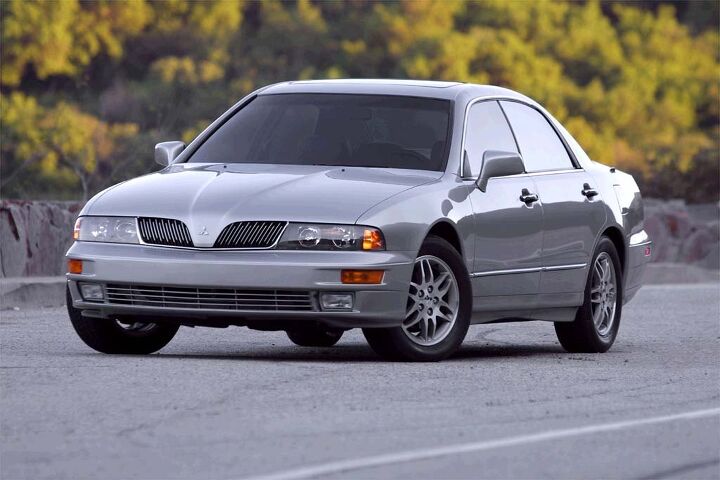
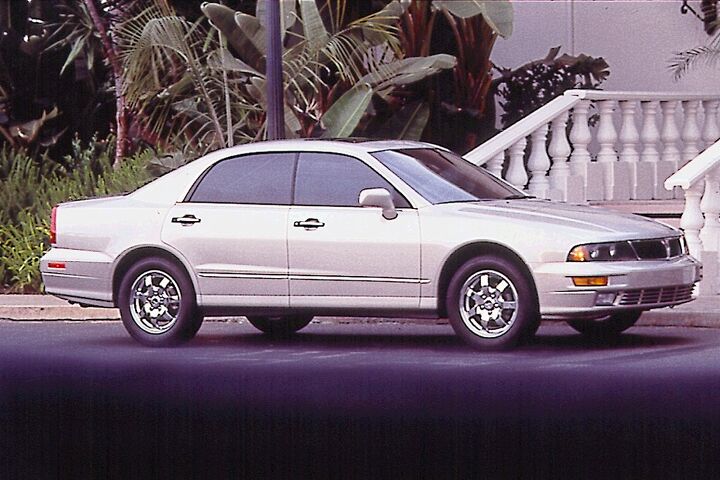
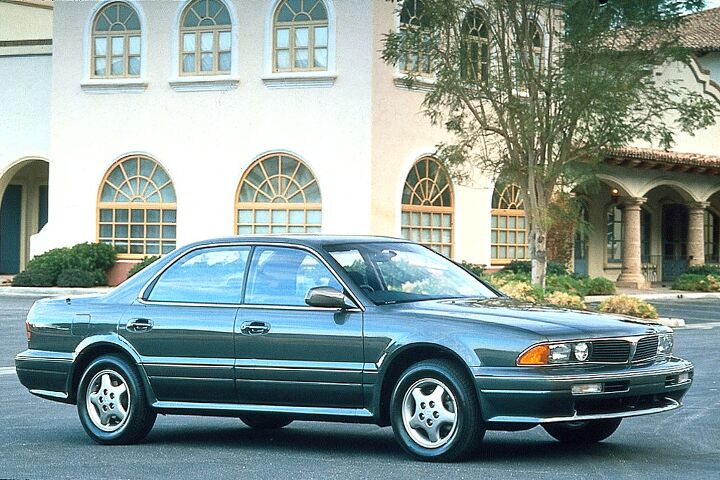
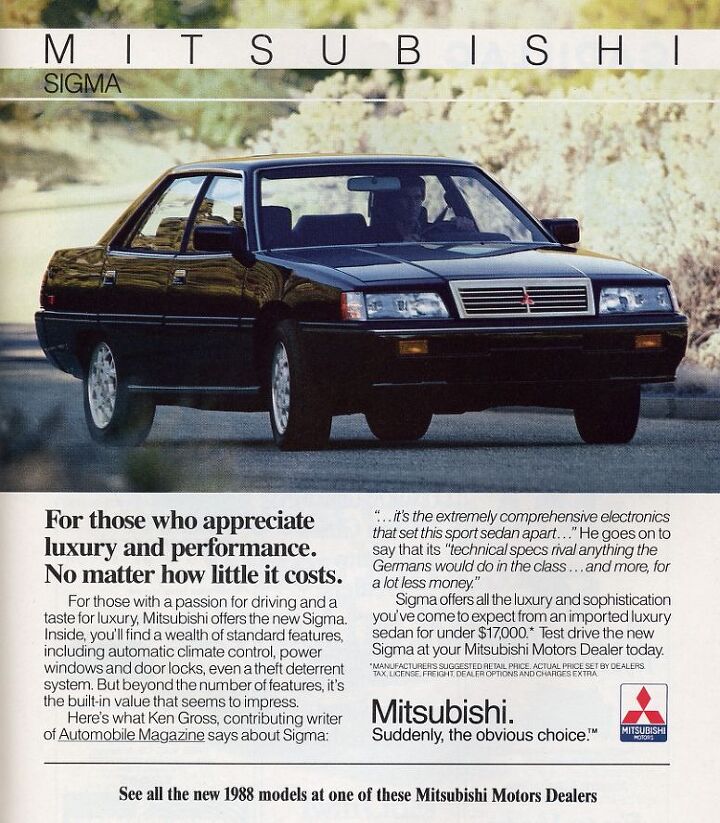
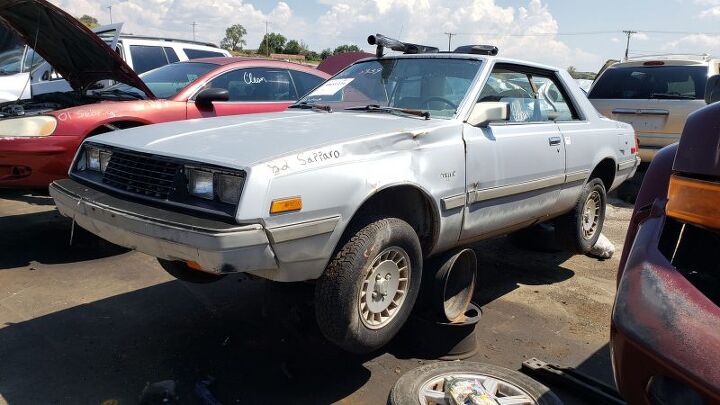
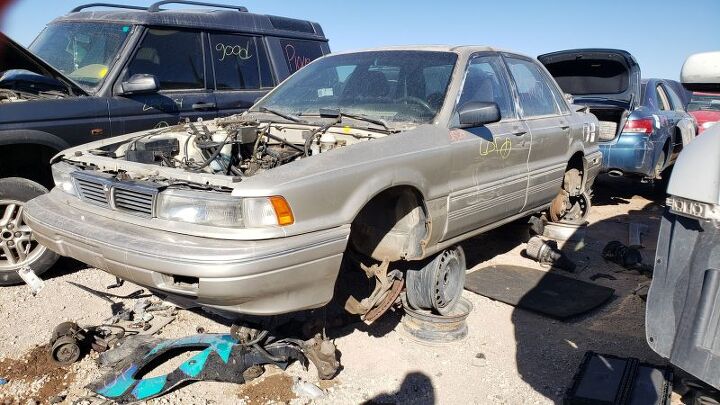
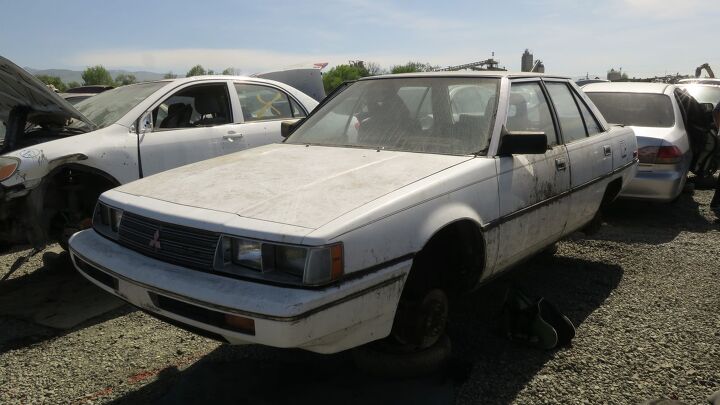
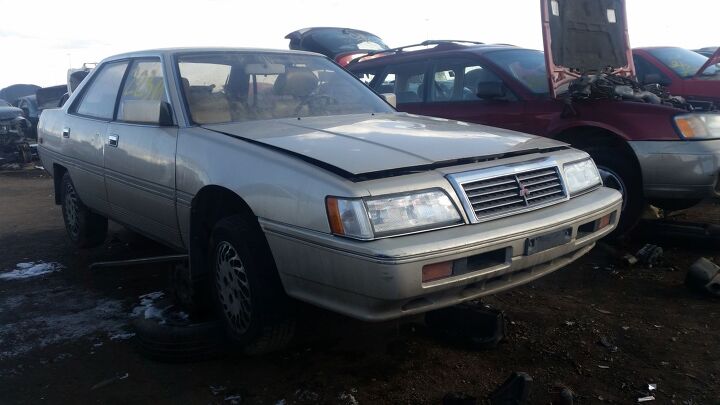

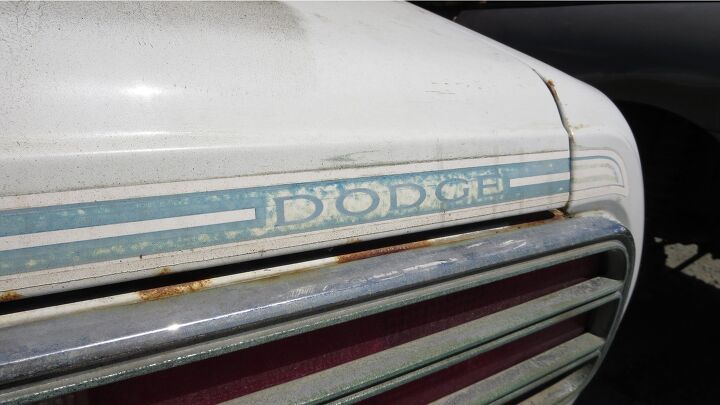

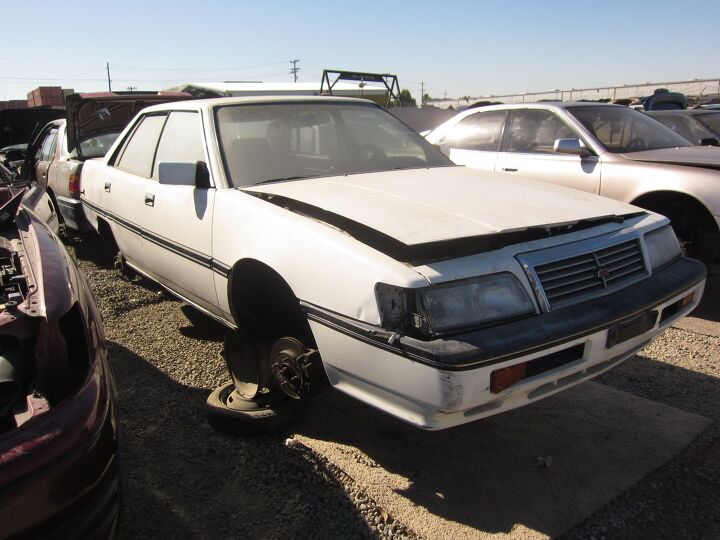














Recent Comments